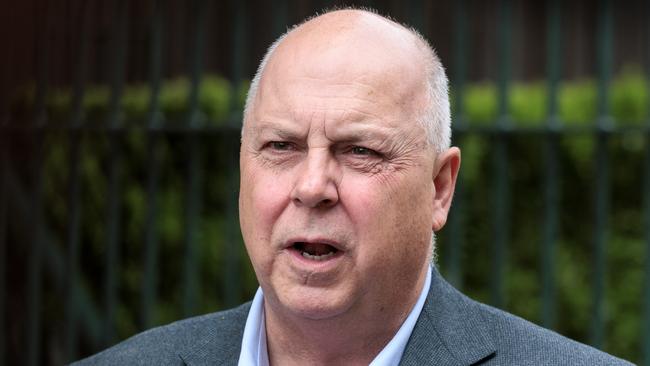Shannon Deery: Any way you slice it, this budget will be a shocker
Victoria’s finances are a mess — and when Tim Pallas hands down the budget in six weeks, slashing spending, jobs and service delivery will be the high price needed to bring it under control.
Opinion
Don't miss out on the headlines from Opinion. Followed categories will be added to My News.
In six weeks Tim Pallas will hand down his ninth budget. On his own account it will be unlike any the Treasurer has delivered before.
Compared to when the Andrews government came to power in 2014, Victoria’s finances are a mess.
Net debt is on track to reach a whopping $165bn by 2026.
As a percentage of gross state product, our debt has more than tripled from the 6 per cent it was.
We now pay $10m a day in interest payments on that debt, a figure at risk of rising further with interest rates.
The state’s wages bill has almost doubled since 2014, as have its taxes.
Total taxes across the state were $18.3bn. By 2026 they are forecast to be $35.6bn, a 94 per cent rise. Broken down, that’s an increase of $6135 per household, or $2647 a head.
And while Victoria in 2014 enjoyed a $2bn budget surplus, last year it recorded a $9.7bn deficit.
Pallas and Premier Daniel Andrews have spent recent weeks tempering budget expectations and talking up the need to pay down debt.
That’s the on-the-record line being spun to prepare Victorians already grappling with rising interest rates and a cost-of-living crisis.
Off the record, government sources have been explicit in foreshadowing the budget as a horror show.
Make no mistake, the razor will be taken to government jobs and critical service delivery.
There’s much we already know to be under serious consideration.
Funding for grassroots community groups and not-for-profits could be cut in a move aimed to recover billions of dollars.
“Community groups and not-for-profits who have done very well out of the Andrews government for a very long time are going to have their funding slashed,” one senior source confirmed.
Maintenance budgets across the health sector are likely to be slashed, while the government’s building blitz on new schools is considered dead.

The state’s major capital works programs will be stripped back with spending across the environment, education and regional development all at risk.
Infrastructure spending could also be decimated, according to sources familiar with ongoing discussions.
Thousands of public servants are in line to lose their jobs, with government departments asked to axe 10 per cent of permanent staff.
If implemented it would leave more than 5000 workers out of work and signal the biggest job cuts in more than a decade – since former premier Ted Baillieu pushed to slash 3600 jobs in 2012.
Such extensive cuts would have, in Pallas’s own words, a “massive impact” on key services.
He made those comments when opposing the Baillieu government’s proposed job cuts a decade ago.
The government also has to find at least $250m to prop up the struggling Homes Victoria, and more for WorkCover, which is operating at a loss of $1.1bn.
In a bid to curb WorkCover’s billion-dollar blowouts, the government has floated a list of ideas to ensure its financial viability.
They include excluding bullying and harassment claims, and possibly covering only post-traumatic stress disorder under the category of mental health claims.
It appears to be a Band-Aid fix that might help balance the books, but at what cost to Victorian workers’ health and wellbeing?
While the government has committed to delivering on its election promises, senior public servants are privately warning that this may not be possible.
They say departments are also struggling to cover ordinary operating expenses.
Slashing spending, jobs and service delivery is a high price to bring the budget back under control.
The government will blame Covid-19 and other external forces for the state’s financial mess.
It pumped more than $44bn into the Victorian economy to respond to the pandemic and keep workers in jobs and businesses afloat. It provided rent relief, support payments and direct financial support.
Soaring inflation and rising interest rates have had a disastrous effect on our economic position.
But cost blowouts on major projects, and the state’s record debt have heaped insurmountable pressure on the bottom line.
The opposition has kept a running tally of new taxes it says have been introduced under Daniel Andrews’ watch.
Its list is currently at 44. But will it grow?
Sources believe big business could cop a whack in the budget, with a raft of initiatives being canvassed that would involve new levies and charges to boost the coffers.
There are only three quick-fix ways to reduce the debt: cut spending, raise taxes or sell assets.
With little left to sell, if he wants to make a reasonable dent in the budget the Treasurer is in the unenviable position of being forced to cut spending or to raise taxes .
It’s likely he’s getting ready to do both.
Shannon Deery is Herald Sun state politics editor



